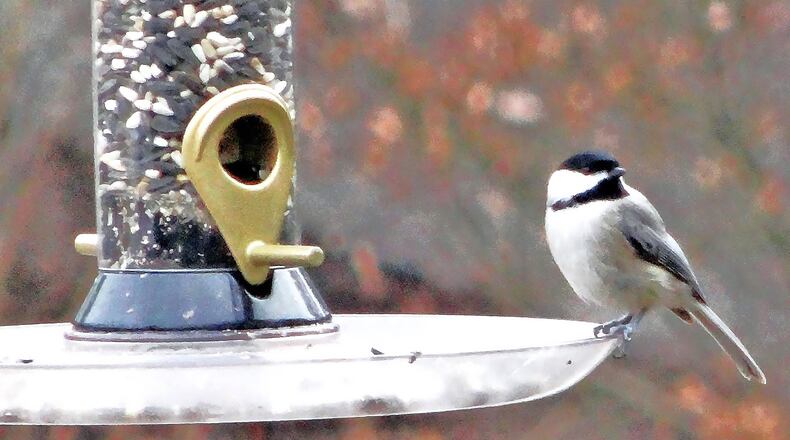We were sitting with a friend — a lifelong Georgian — in her Atlanta yard the other day when she asked the name of a little black-and-white bird perched in a nearby dogwood tree.
“A Carolina chickadee, very common in Georgia,” I replied.
It reminded me, however, that many folks amazingly can’t identify some of the most common birds seen throughout the year in Georgia’s yards, gardens and neighborhoods. So, here’s my list of birds that every Georgian should know:
— Northern cardinal. Ubiquitous in state. Bright red male rarely fails to grab attention.
— Carolina chickadee. Frequent visitor to backyard feeders. (Its cousin, the black-capped chickadee, doesn’t occur in Georgia.)
— Tufted titmouse. Another chickadee cousin that regularly shows up at feeders.
Credit: Charles Seabrook
Credit: Charles Seabrook
— White-breasted nuthatch. Fun to watch as it moves head-first down a tree trunk in search of invertebrates.
— Downy woodpecker. State’s smallest woodpecker; regular patron of backyard feeders and suet feeders.
Credit: Wolfgang Wander
Credit: Wolfgang Wander
— Red-bellied woodpecker. Frequently seen in suburban backyards; readily partakes of suet.
— Northern mockingbird. Few neighborhoods are without a mockingbird.
— Eastern bluebird. One of Georgia’s most beautiful, cherished creatures.
— American robin. Common inhabitant of residential lawns, gardens and parks.
Read more about birder Steve Rushing, who took this photo and seeks to educate his neighbors about backyard birds.
— Carolina wren. Jaunty little bird whose cheerful song brightens a spring day.
— House finch. Native of western North America, but now widespread in Georgia.
— Brown thrasher. Georgia’s official state songbird.
Credit: Dan Pancamo
Credit: Dan Pancamo
— Blue jay. Has adapted well to suburban neighborhoods.
Credit: Elaphe 1011/Creative Commons
Credit: Elaphe 1011/Creative Commons
— Mourning dove. Soft cooing is a familiar sound in neighborhoods.
— American crow. Hard to believe that someone can’t identify a crow.
Other candidates include Eastern towhee, Eastern phoebe, American goldfinch, chipping sparrow, pine warbler, brown-headed nuthatch and red-winged blackbird.
You may have your own list, but learning to identify common birds can help make your time outdoors more enjoyable — and perhaps help you look at the world with more wonder.
IN THE SKY: From David Dundee, Tellus Science Museum astronomer: The moon will be full on Sunday — the “Fruit Moon.” Venus sets in the west a few hours after sunset. Jupiter and Saturn are in the east at dark.
Charles Seabrook can be reached at charles.seabrook@yahoo.com.
About the Author
Keep Reading
The Latest
Featured


















